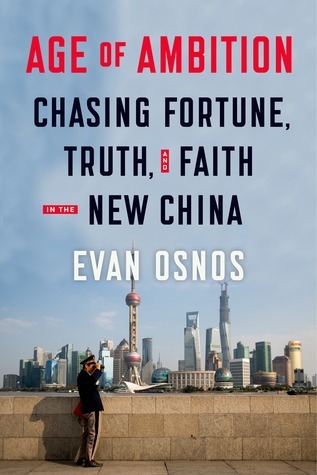More on this book
Community
Kindle Notes & Highlights
by
Evan Osnos
Read between
May 20 - June 7, 2021
in China, people joke that tax evasion is the national sport.
Ai Weiwei had become as much a symbol as a man; he was the most famous dissident China had ever known.
in the East China Sea—five small islands and three rocks known, in Chinese, as the Diaoyu Islands. Home to moles and albatrosses, but no human inhabitants, they lay far out to sea. Japan controlled them, but China maintained that it was their rightful owner. For decades the dispute had lain dormant, but the islands were suspected to sit atop valuable oil and gas deposits, and bit by bit, the conflict was turning physical.
the rising generation of Chinese nationalists was earnestly complaining about the lack of free expression.
In China, one of the most difficult things to do was to gauge public opinion. Polls provided some insight, but only up to a point, because anyone who spent much time in China was reminded that asking citizens of an authoritarian country for their views on politics, over the phone, did not produce candid answers. Viewed from afar, the bursts of nationalism, the occasional violence, could make it appear as if China were boiling with patriotic anger. But, up close, it was not, and it was difficult to know how many people really shared that sentiment.
After his death in 2011, Jobs had become an object of fascination in China; to his young Chinese admirers, he was a nonconformist who became a billionaire.
the unveiling of the new Standing Committee of the Politburo. It consisted of seven men: five who would serve for five years, and the president and premier, who were expected to serve for ten.
four out of the seven men who would now lead the country were members of aristocratic Communist families; the Party had once taken pains to avoid the perception of nepotism, but now it placed political reliability above all, and the incoming generation included a larger share of hereditary rule at the top than any time in the history of the People’s Republic. Outwardly, the Party had vowed to select officials in a “democratic, open, competitive and merits-based” way, but political watchers had been able to predict the lineup by tracking the backroom negotiations
By some essential measures—eliminating hunger, illiteracy, and medical neglect—the public was more satisfied than in most countries. When sociologist Martin Whyte of Harvard first asked people, in 2004, if they were receiving coverage under public medical insurance plans, only 15 percent of those in the countryside said yes; when he asked again in 2009, that share had grown to 90 percent. People still faced wide gaps in coverage, and their insurance provided only the most basic care, but the progress was clear.
The Party’s long-term objective was no mystery: if Xi Jinping fulfilled his duty to lead the Party until 2023, China would surpass the record held by the Soviet Union as history’s most durable one-party state.
though the Chinese middle class was galvanized by many of the issues that had animated its peers at the advent of democracy in Taiwan, the Philippines, and South Korea (consumer rights, the environment, labor rights, housing prices, free speech), in China there were very few formal organizations in which people could assemble and produce a coordinated alternative to Party rule.
The one-child policy had sharply reduced the number of young workers who had once made Chinese factories so inexpensive. Between 2010 and 2030, China’s labor force would shrink by sixty-seven million people,


